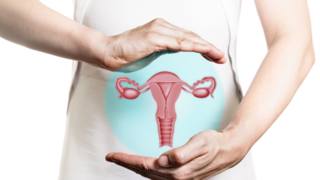In this article:
Pelvic floor recovery is not a luxury. It’s a critical part of healing after childbirth. But in India, where obstetric follow-up is minimal and physiotherapy is often overlooked unless you're visibly limping, countless women are left to suffer symptoms they don’t have words for. This article lays bare the silent crisis of neglected postpartum pelvic care and what you need to know if you’re dealing with it.
What Is Postpartum Pelvic Recovery and Why It Matters
Pelvic recovery refers to the healing and rehabilitation of the muscles, nerves, and connective tissues that form the pelvic floor, a crucial group of muscles that support your bladder, uterus, rectum, and vaginal walls.These muscles take a direct hit during childbirth. Whether you had a vaginal delivery, a C-section, or an assisted birth, pregnancy itself causes stretching, weakening, and sometimes tearing of these tissues.
Yet, unlike stitches or scars, pelvic damage often goes unseen.
Pelvic physiotherapy, a form of guided rehab by trained professionals, helps assess and restore function in this region. It can prevent long-term complications like:
- Urinary or faecal incontinence
- Vaginal heaviness or organ prolapse
- Painful intercourse
- Persistent lower back or pelvic pain
- Diastasis recti (abdominal separation)
And yet, it’s rarely part of routine postpartum care in India.
What Makes Recovery Worse in the Indian Context
Several systemic, social, and structural factors contribute to this widespread neglect:- Lack of routine screening: Most Indian gynaecologists don’t assess pelvic floor strength, incontinence, or muscle tone at your six-week check-up.
- No national postpartum rehab framework: Unlike countries like France or the UK, India does not mandate postnatal physiotherapy referrals.
- Cultural taboos: Talking about leaking, sex pain, or bowel dysfunction is considered shameful. Many mothers suffer in silence.
- Cost and access barriers: Pelvic physiotherapists are concentrated in urban metros, often in private hospitals or boutique wellness clinics.
- Overmedicalisation of birth, under-medicalisation of recovery: Once the baby is out, focus shifts entirely to the infant, not the healing parent.
What Should Be Screened and Treated But Usually Isn’t
The following issues are common, but not normal, after birth. They deserve evaluation and intervention, ideally within the first 8–12 weeks postpartum:- Stress urinary incontinence – Leaking urine during physical stress (e.g., cough, lift)
- Urge incontinence – Sudden need to urinate but can’t hold it
- Pelvic organ prolapse – Feeling of a “bulge” or “heaviness” in the vagina
- Dyspareunia – Pain during sex due to tight pelvic muscles or scar tissue
- Lower back or hip pain – Often linked to poor pelvic alignment or weak core
- Rectus diastasis – Gap in abdominal muscles that affects core function
- Constipation or painful bowel movements – Linked to pelvic floor dysfunction
How It Should Be Diagnosed or Evaluated
A full postpartum pelvic assessment should include:- Pelvic floor strength test using internal manual exam (by trained physio)
- Check for diastasis recti by measuring the abdominal gap during a crunch or sit-up motion
- Bladder diary or pad test if leaking is present
- Postural and breathing assessment for core activation
- Functional tests — checking if you can walk, squat, or lift without pain
Note: Gynaecologists are not trained in pelvic floor rehab. You need a women’s health physiotherapist or uro-gynaecologist for this level of care.
What Recovery Should Involve
If India had a better postpartum rehab system, here’s what recovery would include:- Pelvic floor retraining: Learning how to contract and relax the muscles, not just do “Kegels.”
- Scar tissue massage: Especially after episiotomy or C-section, to reduce tightness or adhesions.
- Breath and posture work: Diaphragmatic breathing to support pelvic healing and reconnect your core.
- Progressive return to movement: Starting with gentle activation (e.g., glute bridges, side-lying clamshells) and gradually scaling to full-body strength.
- Supportive garments, if needed: Abdominal binders, pelvic support belts, or vaginal pessaries (for prolapse) when advised.
- Sexual health counselling: For pain, fear, or anxiety related to intimacy after birth.
Your physical pain isn’t “just in your head.” But what happens in your body deeply affects your mind.
- Many women feel ashamed when they leak urine or can’t control their wind.
- Some avoid intimacy altogether because no one explained that pain is treatable.
- Others internalise guilt for “not bouncing back” when in fact, they were never given the tools to recover.
Here’s what can help:
- Talking to a trauma-informed physiotherapist or counsellor
- Seeking local postpartum support groups (online or in your city)
- Normalising the use of tools like incontinence pads, cushions, and rehab apps
- Having one trusted person who checks on your healing, not just the baby’s
The body doesn’t forget birth, even when the healthcare system does. You deserve recovery that goes beyond stitches and scars. Pelvic health is essential, not optional, and neglecting it can leave long-term damage. While India’s medical system is still catching up, knowing what to ask for, what to expect, and what’s treatable is your first step to real healing.
FAQs on India’s Postpartum Physiotherapy Gap: Why Pelvic Recovery Still Gets Ignored
- Is pelvic floor therapy only for vaginal births?
No. Even C-sections impact your pelvic floor, especially after months of baby weight, constipation, or lack of core support. - Is it too late to start pelvic rehab after a year?
Not at all. While early intervention is ideal, improvement is possible even years later with the right guidance. - Can I do Kegels at home instead?
Kegels can help, but doing them wrong or without assessment can worsen symptoms. A therapist can tailor them to your body. - Where can I find pelvic physios in India?
Search for “women’s health physiotherapist” or “pelvic rehab specialist” in major cities. Some offer virtual consults. Check credentials and client reviews.






